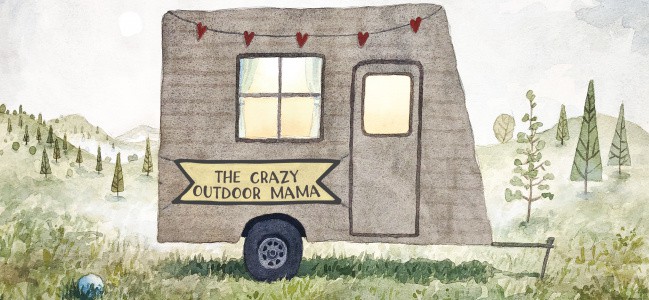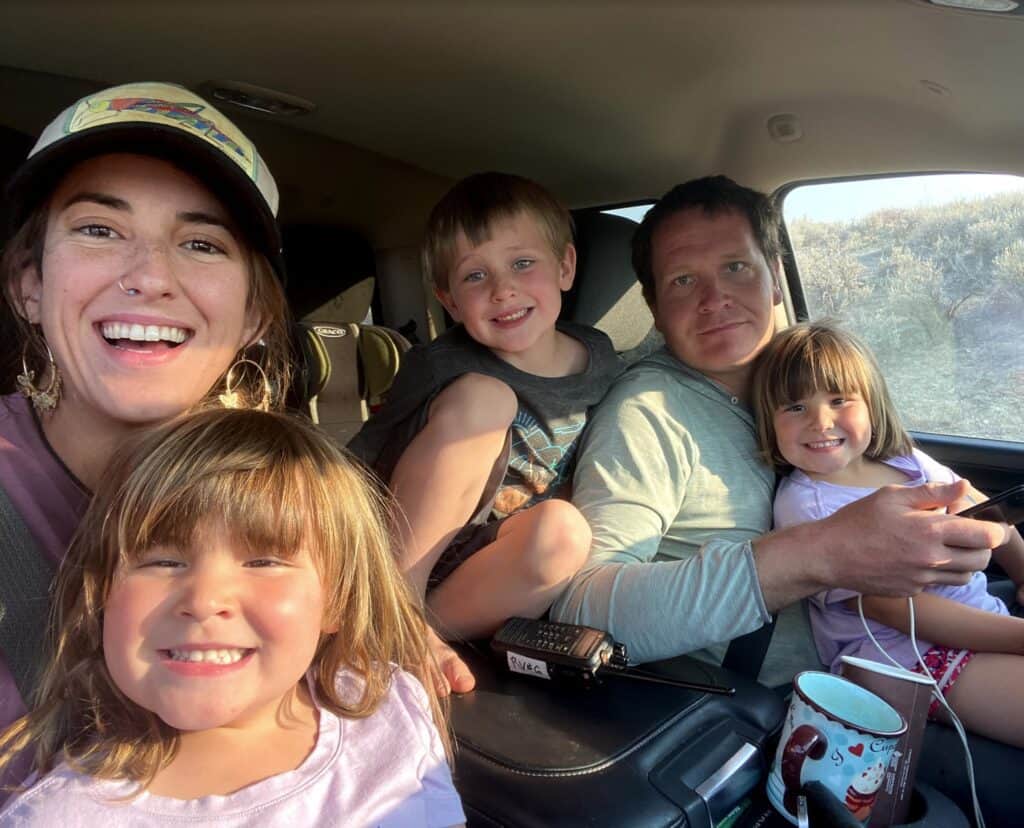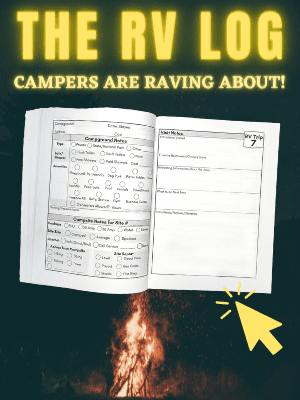“All adventures, all memories and all travels start with a blank page!”
So, you’ve got a blank page and now you’re starting to plan your first overlanding adventure. But an overland camping trip isn’t your run of the mill road trip. You’re gonna be in remote places on unknown roads depending solely on what you’re carrying in your vehicle.
So you’ve probably got like a million and one questions rolling around in your head.
-How do I start planning my overlanding trip?
-What kind of vehicle do I need?
-Do I have the right gear?
-How am I gonna chill my wine?
Don’t worry! Planning your first overland trip is part of the adventure. So sit back, take some notes, and let’s dive right into overland camping for beginners.
Let’s start with the very basics you’ll need for your first baby overlanding trip and we’ll look at some things you’ll need to get your feet wet with some more serious overlanding.
*Oh, and if you’re kinda fuzzy on what the terms “overlanding” or “overland camping” means, don’t miss my post What is Overlanding? Get Ready to Go Overland Camping!

Overlanding Basics – What You NEED to Know Before You Go
Here are 3 things you need to keep in mind before you go on your first trip.
- Prepare your mind
- Prepare your setup
- Start small
Prepare for a mental challenge
Overlanding is as much about your mental game as it is about your gear setup. You could have the best overlanding gear in the world, but that won’t help if you make a stupid decision while in the middle of nowhere.
On a normal road trip…
If you get a flat tire, you call AAA for help, wait in your warm vehicle while updating your facebook status, and in half an hour your tire is changed. There’s very little problem-solving ability or just pure grit needed to conquer the obstacles of an average road trip.
But on an overlanding expedition…
You might get a flat tire while 50 miles into the backcountry and on the side of a mountain. And it’s snowing. Or if a route took longer than expected, you might start running low on gas with 70 miles of dirt roads in all directions to the nearest gas station (and twinkie stand).
Now you need to put on your thinking cap, keep a positive attitude, and WORK THE PROBLEM.
But that’s really why an overland camping trip is such a great adventure!
- You see places very few people ever see.
- You learn skills that will help you in real life.
- You head out on a dirt road knowing that the next time you hit pavement, you’ll be a better person.
Prepare your overlanding setup
Since overlanding is self-reliant adventure travel into unknown or remote areas for days or weeks at a time, you need at least a basic overlanding setup you can depend on.
Your vehicle is your home. You have to be able to go at least several days without needing to stop at a store for gas, twinkies, or other essentials. Sure, this can be accomplished with expensive gear and off-road vehicles, but it’s more important that whatever setup you have be well planned out.
*See below for more options on preparing a basic overlanding setup that fits your budget and overland camping needs.
Start Small
If the closest things you’ve ever done to overlanding are RVing, car camping, or a regular road trip, then try going on a 2-4 day mini-overland trip to get started. Work out the kinks. Make notes on what worked and what didn’t.
Then try a 7-10 day trip. Go to some more challenging places. Try being self-sufficient for at least a whole week. If you can do that, then you’re ready to go just about anywhere in the world!
Ready to get started with your first overland camping trip? Keep going in the next section to see the absolute basics that you need to get started. You probably already have most of it in your garage!
Budget Overlanding – How to Start Overlanding With Just the Basics
Before you go dropping a couple hundred thousand dollars on a new Earth Roamer, one of the best things you can do is take a multi-day adventure road trip, basically… a “baby” overlanding trip. (You know.. Crawl before you can walk)
It’s worth it to learn new skills, clearly identify what gear you’ll need and anything that’s lacking in your setup. Plus, you can do it on a BUDGET!
And for probably 90% of us aspiring overlanders, a multi-day “adventure road trip” may be all we’re able to do because of work or family responsibilities.
So what are the absolute basics you need for your first overlanding trip?
So let’s say you want to take a 4-day trip to some remote areas you’ve never been before. You’ll be on mostly dirt roads (smooth dirt roads, nothing too aggressive). You’ll be away from electricity, stores, and gas stations for most of the time. And you’ll be wild camping wherever you can find a spot.
For a trip like this, you’ll need 3 things…
- A reliable vehicle
- Basic camping gear
- A way to store and cook food
Plus a few more odds and ends (but you probably already have them at home)
1. A Reliable Vehicle
For a basic trip like this, you don’t really need to worry about massive ground clearance, super duty towing capacities, and a locking differential.
A reliable vehicle with decent all-season tires and average ground clearance can go a surprising amount of places. Don’t believe me? Check out the ridiculous Mongol Rally, an adventure race across 10,000 miles of mountains, deserts, and international borders in sub-compact cars with small 1-liter engines.
If you have something like a small SUV or crossover, even better! The key here is reliability. You’re depending on your vehicle so it should be dependable (duh!)
If all you’ve got is a ‘96 Saturn with 300,000 miles that barely gets you to Wal-Mart, well… maybe you should stick to backpacking (or get a new vehicle).
2. Camping Gear
If you’ve already got a basic camping setup, then you’ve won half the battle! So raid your camping closet and throw in your…
- Tent
- Sleeping Bags
- Camp stove
- Cooler
- Flashlights
- Camp chairs
- Water jugs
- Solar shower
- First aid kit
- Toiletries
Just pay special attention to how you pack it. When you go car camping like normal, you usually pull everything out of your vehicle to set up your campsite. But when overland camping, you usually keep almost everything inside your vehicle, so you need to make sure to use common sense when packing.
It helps to get just a few stackable tubs where you can organize things like kitchen stuff, tools, clothes, sleeping gear, etc.
3. A Way to Store Food
While on a normal car camping road trip, it’s easy to stop and replenish the ice in your cooler every day to keep your food cold.
Since you won’t have access to ice (unless you’re overlanding in the winter), then you’ve got three options:
- Pack backpacking meals that don’t need refrigeration.
- Pack perishable food for just the first day or two, then switch to non-perishable foods.
- Get a 12v cooler you can run off your car.
The third is the best option especially if you want to take some longer trips in the future. Fortunately, you can get some moderately sized 12v coolers for pretty cheap.
Igloo Iceless Thermoelectric Cooler
Adding something like this to your budget overlanding setup can make you feel a lot more at home and give you tons more options of what to pack for your meals.
A Few More Odds and Ends
A few more things that you’ll need to start overlanding are…
A way to navigate, aka… Google Maps. Whatever maps program you use, just make sure to download offline maps before you go. And even if you do that, it’s still a good idea to bring an old fashioned paper map of the area you’ll be exploring.
You never know when you’re phone might slip out of your hands directly onto the pointest rock in the universe and shatter into a million pieces (definitely not speaking from experience).
A way to charge your devices. Most newer cars have USB charging ports. And if you don’t have a newer car, then you probably already have an adapter that plugs into the 12v port (cigarette lighter).
Some basic vehicle tools. Before you set off into the wild, check your spare tire. Is it in good shape? Check your vehicle jack. Does it work? And more importantly, do you know how to work it? Do you have extra vehicle fluids like coolant, oil, etc.?
Almost anyone can go on a mini overlanding trip like this, as long as you have a reliable vehicle, basic camping gear, a way to store your food, and a sense of adventure. A short trip like this is a great way to scratch your adventure itch and get started as an overlander.
So let’s say you did your first overland camping trip, loved it, and want to plan another. And now you’re willing to invest some in your overlanding setup in order to explore more places and be more self-sufficient.
What now?
Must-Haves to Start “Real” Overlanding
Now that you’ve conquered a mini-overland trip or two, let’s look at some improvements you can make to your setup. We’ll consider a few options that’ll tailor to your budget and needs.
*Since this is just an article about starting as an overlander, this is by no means an exhaustive list. Check out my other overland camping articles for more detailed info.
Let’s get started with the backbone, the main course, the cornerstone of any overlanding kit…
The Vehicle
As mentioned before, whatever you choose needs to be reliable. Since that goes without saying, I won’t mention it any more… promise!
So let’s look at your options for overland vehicles.
1. Make Your Own Vehicle More Overland-Worthy
You might think, “But my vehicle’s not a true off-roader!” Overlanding is a lot more than just off-roading. In fact, on a lot of long overlanding trips, you’ll probably be driving more on paved and smooth dirt roads than you will on rocky, muddy trails.
Although it’s surprising what you can do in a regular car, let’s assume that you at least have a small crossover SUV like a Rav4, Forester, or CR-V, preferably with some all-wheel drive options. Sure these aren’t made for rock-crawling, but they’ll go 95% of the places you’ll want to go.
So what can you do to make a vehicle like this more overland-ready? 5 things…
- New tires
- Storage
- Fix what’s broke
- Accessories
- Suspension
New Tires
Get a set of all-terrain tires. They’re more rugged, can handle getting beat around without puncturing, and will have way better grip.
An all wheel drive “soft-roader” with a good set of all-terrain tires can conquer some surprisingly rough terrain (as long as you’re not in deep mud, fine sand, or snow).
Some of the most popular options are:
Storage
Figure out a way to organize and store your gear so it’s easy to get to. Your storage system could be as simple as some plastic tubs or as fancy as custom built pull out drawers with built-in kitchen components.
It’s also worth adding a roof rack. You’ll usually have things like spare gas cans, muddy shovels, or spare tires that you just don’t want to carry inside the car.
Fix What’s Broke
You know that new battery you’ve been needing to get, or that loud clicking sound that happens anytime you go over 25 mph? Now’s the time to get those things looked at! Get your car serviced, make sure the fluids are topped off, and that everything is in good working order before you head out.
Accessories
A few simple vehicle accessories that’ll help you get started overlanding in your current vehicle.
- 12V Air Compressor
- Tire deflator
- Basic spare parts (fluids, belts, filter, fuses, etc.)
- Basic hand tool set
- Skid plates
Suspension
One of the biggest issues crossovers or “soft-roaders” have when on rough roads with a trunk full of gear is ground clearance. So if you’re willing to do some slight modifications to your current vehicle, the best place to start is with the suspension.
The budget option is spacer lifts. They fit in your current suspension and provide about a 1-2 inch lift while allowing you to keep your stock suspension. (Always confirm this before purchasing!)
The next step up is to get either taller suspension, more heavy-duty suspension, or a combination of both. Check with your mechanic to see which options are available for your vehicle.
So what if you’re thinking about getting a new vehicle you can use for overlanding, but don’t have $30,000+ to drop on a brand new off-roader?
Here are some of the best used “budget” overlanding vehicles you can buy to get started.
2. Best “Budget” Vehicles to Get Started Overland Camping
Basically, you want a combination of good reliability with some off-road capabilities. Here are some of the best used vehicles to look for.
Toyota 4x4s
Toyota trucks like the Tundra and Tacoma are tough as nails and good off-road even without any modifications. The same goes for Toyota SUVs like the 4Runners and Land Cruisers.
Jeeps
Right off the lot, many Jeeps have great trail capabilities. Of course, the Jeep Wranglers and newer Gladiator (4-door Jeep truck) are excellent choices for tough vehicles you can take just about anywhere.
Even if you’re looking for a “soft-roader” with decent trail capabilities, the Jeep Compass, Renegade, and Cherokee Trailhawk versions offer best in class off-road abilities and are a nice choice as soft overlanders that can also be your daily driver.
Van
Vans like the Sprinter and Econoline vans are decent vehicles to start overlanding with. They’ve got loads of cargo space, excellent load carrying capabilities, and reasonable ground clearance. And if you can find one that’s been converted to 4-wheel drive, even better!
3. I Just Won the Lottery, What Should I Buy?
If you have an unlimited budget try one of these… (then invite me along to test it out)
Gear to Start More Serious Overlandering
Since in this article, I’m just talking about starting to overland, we won’t dive too deep into more advanced overlanding setups and vehicle gear, but here’s some other stuff that’ll get you ready for some more serious overlanding adventures.
Camping Gear
Roof top tent – They get you up off the ground and away from nosy critters. Plus they give you more flexibility than a traditional tent and are faster to setup and take down.
Check out these awesome roof-top tents from iKamper.
All-in-one kitchen setup – Having some kind of all-in-one kitchen setup makes it a lot easier to cook dinner once you’ve found a place to camp. After a long day on the road, it’s so nice to just open a box or pull out a drawer and have a work space and stove ready to go.
iKamper makes a really cool portable outdoor kitchen system. Check it out here!
Vehicle Gear
If you’ve already got the basic vehicle accessories mentioned previously, you should also consider…
Winch and recovery kit – A winch recovery kit is like your life jacket. You’ll be able to power up trails and through the mud with a lot more confidence knowing that if you get stuck, you can just winch yourself out. And while we’re talking about getting unstuck, be sure to throw in a set of these traction tracks!
Hi-Lift Jack – These make it really easy to lift your vehicle and even to slowly winch your way out of a pickle if you don’t have an electric winch.
More lights – Adding auxiliary lights or a light bar to the outside of your overlander will make it a lot safer to navigate if you have to drive at night. And adding a few extra lights even on the interior of your vehicle can make tasks like setting up camp a lot simpler.
Raised air intake (a snorkel) – It’s more than just for wading through deep water. It also helps stops dust from getting sucked into the engine while on dusty terrain.
Power System – If you’ve got a lot of devices to charge, lights around your camp, and a 12v fridge, you should consider another power source in addition to your car’s battery.
Something like the Yeti Portable Power Station gives you portable power when needed. Some even come with solar panels for recharging.
It’s Time to Hit the Road (A Dirt One!)
There you go – everything you need to start your overland camping adventures. Overlanding can be as simple and budget-friendly or as complicated and expensive as you choose to make it.
The important thing is to have fun! Remember, it’s not about the destination. It’s about the journey and all the crazy, unexpected, and wild stuff that happens along the way.
If you want to help planning your next overlanding expedition, don’t forget to check out my other overland camping articles for more detailed info.
What is Overlanding? Get Ready to Go Overland Camping!
Top Overlanding Roof Top Tents
MORE COMING SOON!
- Solar Eclipse 2024 Kids Printable Activity Pack! - April 8, 2024
- 11 RV Bathroom Makeovers to Inspire You! - April 7, 2024
- 13 Dreamy Hammock Camping Set Up Ideas + Pics - February 22, 2024




